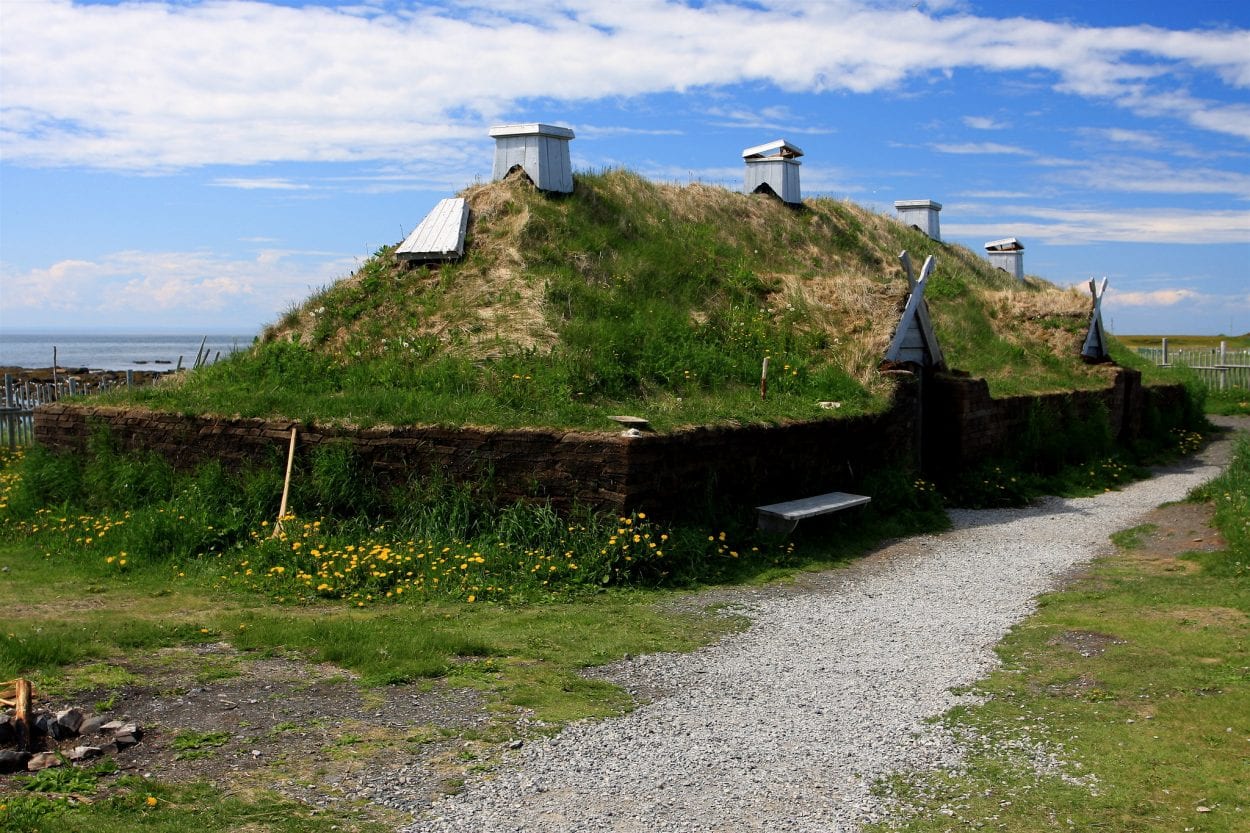L’Anse aux Meadows is an archaeological site, and the remains of a Norse settlement in the Canadian province of Newfoundland and Labrador.
The earliest evidence of occupation dates from roughly 6,000 years ago, with the most prominent period of prior Norse settlement, dating to the Dorset people, a Paleo-Eskimo culture.
A study of the Norse architectural type, artifacts, and carbon dating suggests that the Norse settled at L’Anse aux Meadows around AD 990–1050. Archaeologists suggest that the settlement served as an exploratory base and winter camp, with industrial activity for iron production and woodworking, likely used for ship repair.
The site consists of eight buildings (labelled from A–J) most likely constructed from sod (grass and the part of the soil beneath it held together by its roots) placed over a wooden frame. Buildings B,C, and G have been identified as possible workshops or dwellings, with building J being an iron smithy, and building D a carpentry workshop.
Excavations have also discovered over 800 wooden, bronze, bone, and stone artefacts, including a whetstone, a stone oil lamp, weights, a bronze fastening pin, a bone knitting needle, and part of a spindle, which suggests that women as well as men inhabited the settlement.
Archaeologists theorise that the settlement supported between 30 to 160 inhabitants, but the lack of burials, tools, agriculture, or animal pens gives credibility to the theory that L’Anse aux Meadows only served as a temporary settlement before its abandonment.
The remnants of L’Anse aux Meadows corresponds with two Icelandic sagas, commonly called the Saga of the Greenlanders and the Saga of Erik the Red, that describes the experiences of Norse Greenlanders who discovered land to the west of Greenland, which they called Vinland, but failed to establish a permanent settlement due to infighting, and conflicts with the native peoples that the Norse settlers called the Skræling.
Contemporary text by Adam of Bremen, a medieval chronicler also gives mention of Vinland in an account he wrote in AD 1073, that states: “He [the Danish king, Sven Estridsson] also told me of another island discovered by many in that ocean. It is called Vinland because vines grow there on their own accord, producing the most excellent wine. Moreover, that unsown crops abound there, we have ascertained not from fabulous conjecture but from the reliable reports of the Danes.
Modern archaeological studies have suggested that the L’Anse aux Meadows site was not Vinland itself, but rather was within a larger area called Vinland, which extended south from L’Anse aux Meadows to the St. Lawrence River and New Brunswick.
Header Image Credit : TravelingOtter – CC BY-SA 2.0
